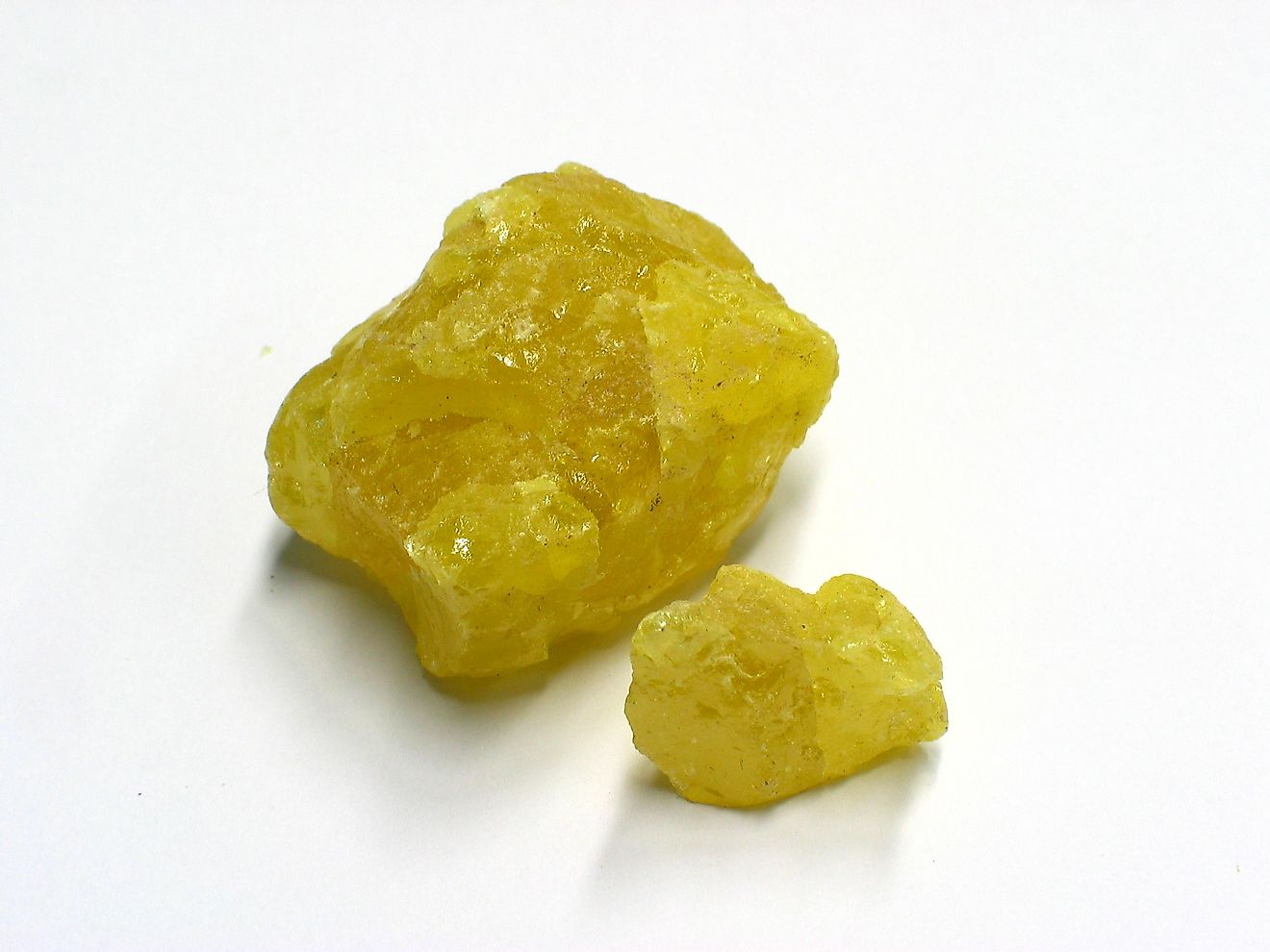Top 12 Sulphur Exporting Countries

Sulfur is a solid chemical element with atomic number 16 on the periodic table. It is an abundant non-metal that occurs naturally as an element in its native form. Sulfur also commonly occurs in combined forms as either sulfide or sulfate minerals. Now that we are aware of some of the basics about sulfur, it is time to discuss the processes involved in exporting it.
Extraction to Export: The Processes Involved
Extraction
The Frasch process was developed in the 1890's by chemist Herman Frasch and was the method used to obtain most of the world's sulfur until the end of the 20th century. The sulfur is extracted from underground deposits by the Frasch process. It is carried out by putting three concentric tubes into the sulfur deposit. Superheated water and hot air are then put into the tubes, so the sulfur is pushed up to the surface. The sulfur recovered from the Frasch process is usually very pure, but if contaminated by organic compounds it is not necessary or economical to purify it. The Claus process was developed in the 1880's by chemist Carl Friedrich Claus and is now the standard process used to extract sulfur since it is now commonplace to extract sulfur via petroleum and gas sources.
Processing
If sulfur is extracted via the Claus process, it needs to be processed to remove it from the natural gasses that are mixed with it. In the processing plants, the hydrogen sulfur is extracted from the gas by converting the sulfur compounds in the gas into elemental sulfur. Sulfur produced this way may come out in a solid state or a liquid state, and it is up to the plant and production needs to decide in what state the sulfur will be shipped.
Shipping
Sulfur may be shipped in either its solid state or liquid state. If the sulfur is in a liquid state, then it is pumped directly into the railroad car, truck, ship or barge in which it has been transported. Whatever the transportation mode, the sulfur is kept in a heated and insulated environment to maintain its liquid state. If the sulfur is in its solid state, then it is transported via various transportation methods.
Applications of Sulphur
Sulfur has different applications, but most sulfur is converted into sulfuric acid. Sulfuric acid is used in the industrial production of chemicals and in the sulphur-iodine cycle to obtain hydrogen. Sulfuric acid is also used in industrial cleaning agents, lead-acid batteries, and acidic drain cleaners. Sulfur is also used in fertilizers, fungicides, pesticides, and pharmaceuticals. Sulfur dioxide and other various sulfites are also used in small amounts in winemaking.
Sulfur Importing Countries
According to the Observatory of Economic Complexity (OEC), the world's biggest sulfur importers are China (16%), the Democratic Republic of the Congo (15%), South Africa (14%) and Indonesia (13%). The only other two countries over 5% are Australia (6.6%) and Cuba (6.4%). The biggest sulfur importer in South America is Chile (1.9%) and in Europe, it is a tie between Germany and the Czech Republic (1.4%).
Top 12 Sulphur Exporting Countries
| Rank | Country | Sulphur Exports in 2015 (USD) |
|---|---|---|
| 1 | United Arab Emirates | $545,797,000 |
| 2 | Russia | $346,775,000 |
| 3 | Qatar | $331,387,000 |
| 4 | Canada | $312,511,000 |
| 5 | Kazakhstan | $286,992,000 |
| 6 | United States | $275,911,000 |
| 7 | Iran | $210,612,000 |
| 8 | Germany | $129,878,000 |
| 9 | Japan | $129,756,000 |
| 10 | South Korea | $118,380,000 |
| 11 | Netherlands | $90,189,000 |
| 12 | Turkmenistan | $86,730,000 |











